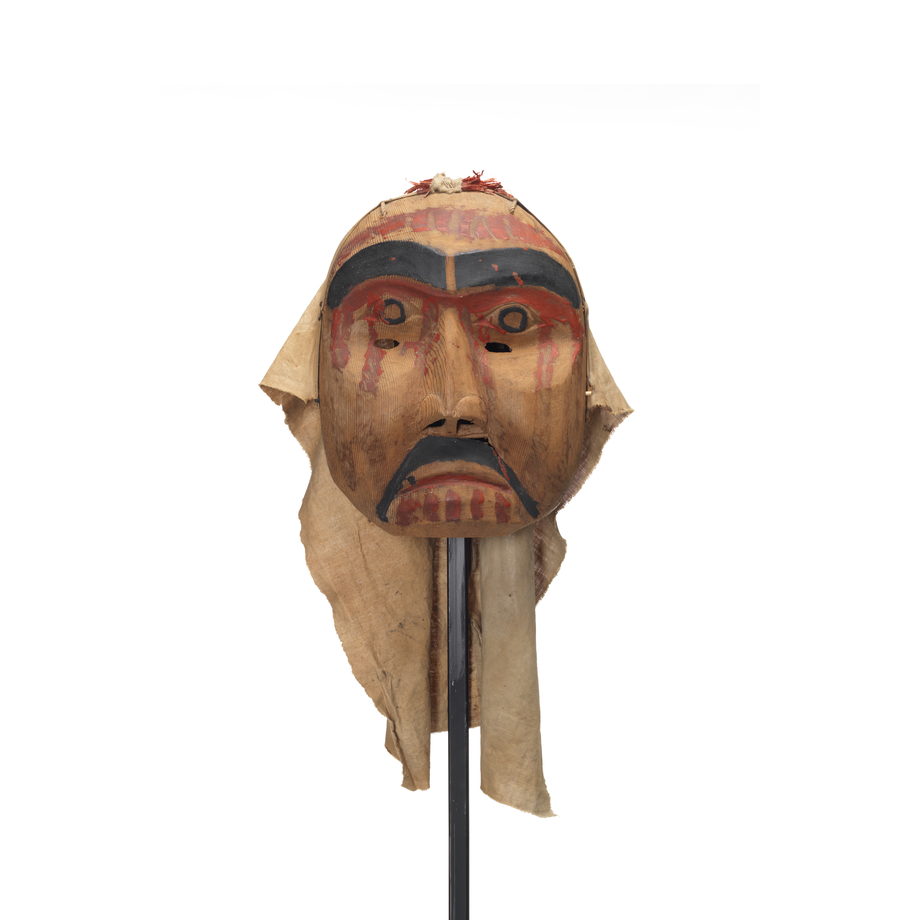K´wasanuma
Mourning Mask
Today, potlatches begin with mourning songs, but, people no longer wear mourning masks. Historically, families who had lost someone wore mourning masks and sang the songs that belonged to the person who had passed away.
Owner
Kwaxalanukwame’, John Drabble, Dzawada’enuxw (Kingcome Inlet)
More Information
The Winter Ceremonial celebration was introduced by a solemn period of mourning songs to commemorate those who had died during the preceding year. During the ceremony, members of the deceased’s family would wear mourning masks and sing each person’s songs. Women were usually the professional mourners and were paid to lament the loss of a loved one. However, these masks, with mustaches and goatees, appear to be men. When the masks were returned to U’mista, the community elders decided that they were mourners because males, at times, do represent mourners. The red streaks represent self-abrasions to show feelings of grief or possibly they symbolize actual tears streaming down the face. These four mourning masks appear to be a set, although one is distinct enough to suggest that it was produced by another carver or by the same carver at a different time.
Catalogue Information
Materials
Wood, Cedar; Cloth, Cotton; Bark, Cedar; Paint; Metal, Nails
Dimensions
23.0 cm x 30.0 cm x 10.0 cm
Accession Number
80.01.029
Physical Description
Mourning mask carved from red cedar. Most of the face is left unpainted, except for the eyebrows and a continuous moustache, which are painted black. Sight holes are crudely carved on the upper cheek (unlike the other three masks, where the sight holes are carved through at the iris). Red vertical streaks are painted on the forehead. A continuous red line follows the eyebrow line just above the eyes, from one side of the face to the other. On each side, three red vertical streaks flow across the eyes onto the cheeks. Five shorter red streaks are painted on the lower chin. The red lips are slightly frowning. A tuft of red cedar bark is attached on the top rim of the forehead. A piece of white cloth is nailed to cover the back.
